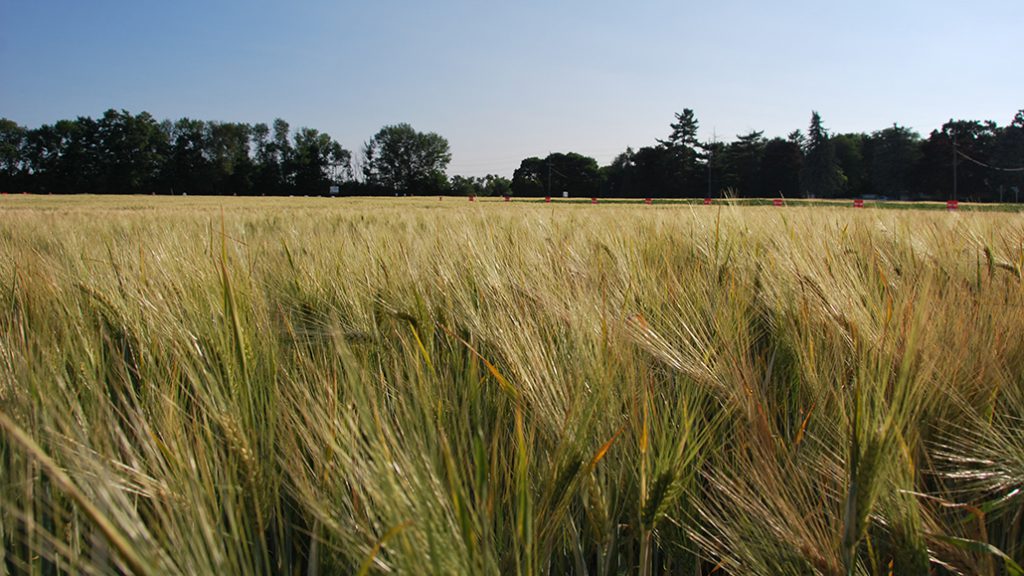Brewing opportunity
STATE OF CRAFT MALT BARLEY IN ONTARIO

MALT BARLEY REMAINS a relatively niche industry for Ontario, with less than one per cent of current barley production going into malt. Significant growth opportunities are available with increasing demand from the flourishing craft brewing industry.
According to the latest statistics provided by the Ontario Beverage Network there are 314 breweries and 39 distilleries in the province. While the craft brewers make up less than 20 per cent of beer production by volume in Ontario, they do use significantly higher total amounts of malt in their recipes which means they are a significant driving force in malt barley growth.
SPECIFICATIONS
There are different malt specifications demanded by craft beer breweries and distilleries when crafting their beverages. Craft beer that is made with 2-row barley requires finished malt with protein less than 12% and very high germination. Distillers can use malt with protein up to 13.5% and don’t require as many plump kernels. This segregation helps to offer additional markets for craft malt in Ontario with varying barley proteins; however, distilling demand is much lower than from craft beer.
It is estimated that approximately 150,000 metric tonnes of malt barley are used each year in Ontario by brewers of all sizes, including large scale, micro, and craft breweries. Most of the barley used by brewers is 2-row and all the barley going into craft malt is. Most of these volumes come from Western Canada with specialty malts coming from all over the world. There is clearly a large market to work with, but Ontario has some internal issues to solve first.
Craft Breweries prefer 2-row due to the uniform, large kernels that contain one to two per cent more starch, and therefore more sugar, relative to 6-row and this leads to more efficient brewing. Even the largest 6-row kernels are not as large as 2-row. There can also be flavour differences between the two as some brewers feel 2-row malt produces a fuller, maltier flavour, and 6-row malt produces a grainier flavour in the finished beer.
MALT HOUSES
Currently, there are three operational craft malt houses with at least one other in the planning stages in Ontario that use local barley. Against the Grain Malt in Sarnia, run by Liam Boshell, is undergoing an expansion. Barn Owl Malt floor malts barley in Belleville and is run by Devin and Leslie Huffman. Harvest Hop and Malt is run by Michael Driscoll in Guelph. These malt houses focus on contracts with local farmers to ensure consistent long-term supply whil
e building up relationships with brewers. Proving that Ontario malt quality can be as good as malt from anywhere else in the world takes time, and the work malt houses do is crucial to increasing the use of malt.
Growing quality malt barley every year in Ontario is a major concern for all parties in the supply chain. Even in major malt growing regions (such as the Prairies) they can struggle to get half of their acres producing the proper quality. The result is that excess acres are needed to be grown each year. In good years, additional markets are needed to sell the extra malt and in poor quality years malt houses could struggle sourcing and producing the consistent quality that is needed.
MARKETING
Malt barley should almost be approached like growing an IP crop, it is crucial to have an end use market lined up before growing and producers need to be aware of alternative markets in case it does not make malt quality. Alternative markets are crucial for malt barley. Barley that does not make malt can sometimes go into a secondary market such as food production depending on a grower’s location and quality. The price gap between malt and food is usually close, but the drop off to feed can be significant if disease or excess proteins show up.
Humid and rainy days in Ontario lead to increased rates of disease and sprouting versus areas like the Prairies. Fungicide applications are crucial in Ontario to try and prevent diseases like stripe rust, spot blotch, net blotch, and Fusarium head blight. Fusarium head blight can lead to deoxynivalenol (DON) which will lead to rejection for malt or even the alternative food grade market. In addition to environmental factors, farmers must ensure over application of nitrogen does not occur which results in high protein levels.
The reality is that malt barley remains a relatively small market in Ontario with crucial areas to be solved before it can take off. Developing new varieties in Ontario that can deal with the climate is step one that will give brewers more flexibly in dealing with weather issues. The increased consistent supply is needed for malt houses to continue expanding and have new entrants into the market. The demand for local, craft malts exists but the entire supply chain must grow together in order to push through some significant challenges.
Growing malt quality barley is difficult in Ontario but when it is grown, malted, and brewed successfully, it is a worthy and delicious outcome.
Justin Shepherd is the market development coordinator for Grain Farmers of Ontario. •
| DID YOU KNOW? One tonne of finished malt will make 5,000 litres of beer, or over 10,500 pints of beer! |


























